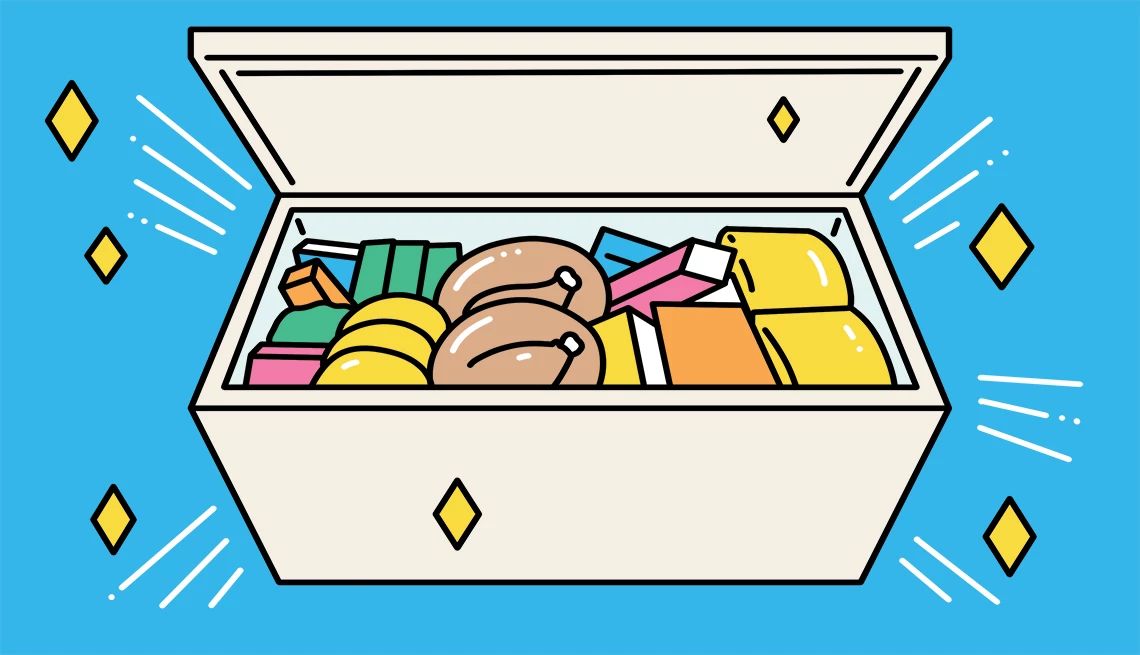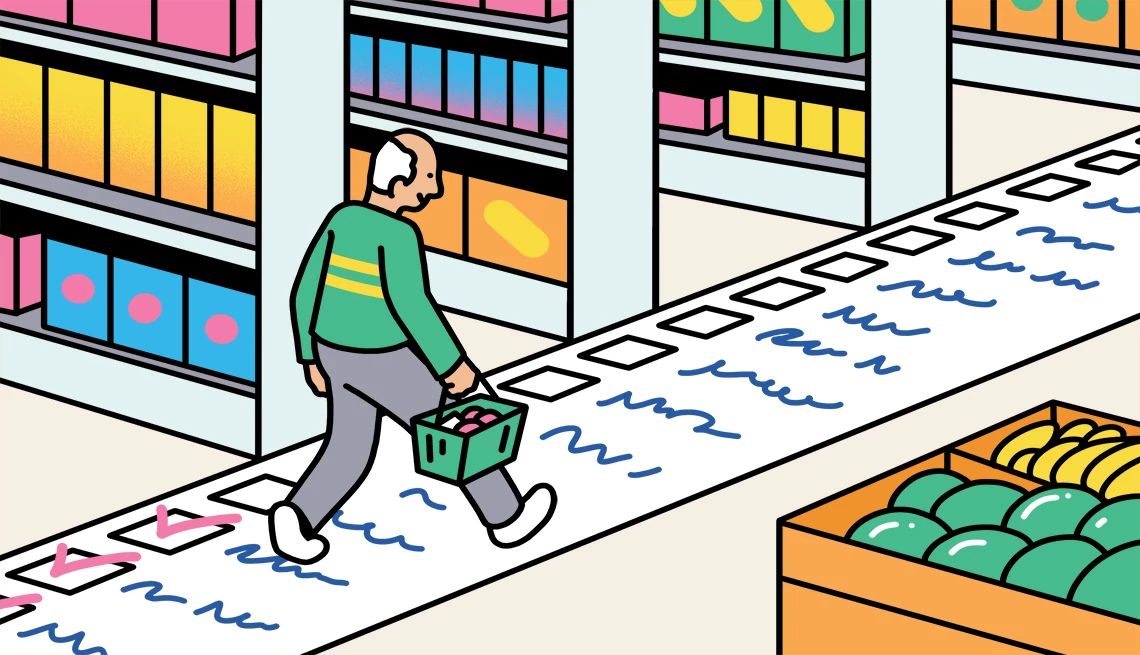AARP Hearing Center


A trip to the grocery store can break the bank these days. Food-at-home prices are up more than 20 percent since the pandemic began, and shrinkflation — when food manufacturers shrink the package size but not the price — is rampant on supermarket shelves.
“Avian flu affected egg prices, climate change is affecting the availability of beef, and commodity prices are rising broadly,” says Mark Hamrick, Bankrate’s Washington bureau chief, adding that labor shortages are also increasing the cost of doing business. “With respect to food, it’s a multifaceted story, and all are pointing in the same direction, which is up.”
Food prices aren’t expected to return to prepandemic levels, but that doesn’t mean every visit to the supermarket has to be a budget-busting experience, which is particularly important if you are living on a fixed income. There are many ways to save on groceries. Here are 25 tips and tricks worth trying.
1. Get creative with leftovers
Making leftovers more appetizing means you’re more likely to eat them, saving you the cash you would have spent on subsequent meals. The key is to create dishes that don’t make you feel like you’re eating the same thing every day. For example, leftover meat patties can go into a pasta dish or a cheeseburger salad, while surplus pork shoulder can become a taco filling.
2. Trade down
Most grocery chains stock no-frill store brands or sell generics that tend to be priced lower than name brands. “Store brands often have the same ingredients as the brand name — they are sometimes made in the same factories — and are usually much cheaper,” says Trae Bodge, a money expert and founder of TrueTrae.com. “Before switching to a store brand, compare ingredients for ingredients to your name-brand favorites to ensure you aren’t buying something with unnecessary fillers and other additives.”
3. Avoid prepared foods
Precut fruit and vegetables and prepared meals are quick and easy, but you’ll pay a steep premium for the convenience, which is why Hamrick says to resist the temptation. “With prepared meat loaf you are paying more than the sum of ingredients because somebody had to make it,” he says. “There’s a tremendous difference in price for a marinated chicken breast and a chicken breast you add your own marinade to.”
4. Stick to sales
Every week, grocery stores advertise what’s on sale, from a percentage off an item to buy-one-get-one deals, in newspaper circulars and online. Building your shopping list exclusively around what’s on sale can lower your weekly food costs substantially.


5. Invest in a freezer
Stocking up when items go on sale can save you big bucks if you have the storage space. That’s where a stand-alone chest freezer comes in. “Instead of being subject to the variety of prices each week, you purchase items when they are 50 to 75 percent off and freeze them,” says Steve Economides, who along with his wife, Annette, founded the Money Smart Family to teach people how to be frugal.
6. Shop your kitchen first
Before you head out to the grocery store, take stock of what you have in your pantry, refrigerator and freezer. You may only need a few ingredients to make a meal out of what you already have on hand.
7. Take advantage of senior discount days
Many supermarkets offer people over a specific age, say 60 years old, a percentage off their bill. The grocery stores typically pick one day per week, known as a senior discount day, to extend this perk to their older shoppers. The discounts tend to range from 5 to 10 percent off your grocery bill or select items.


































































You Might Also Like
25 Great Ways to Save on Beauty Buys
Stay beautiful and on budget99 Great Ways to Save 2024 Edition
Make your money work harder for you — and save on entertainment, health care and groceries
25 Great Ways to Save on Your Next Vacation
Travel industry pros share tips to help you keep costs down, without skimping on funRecommended for You